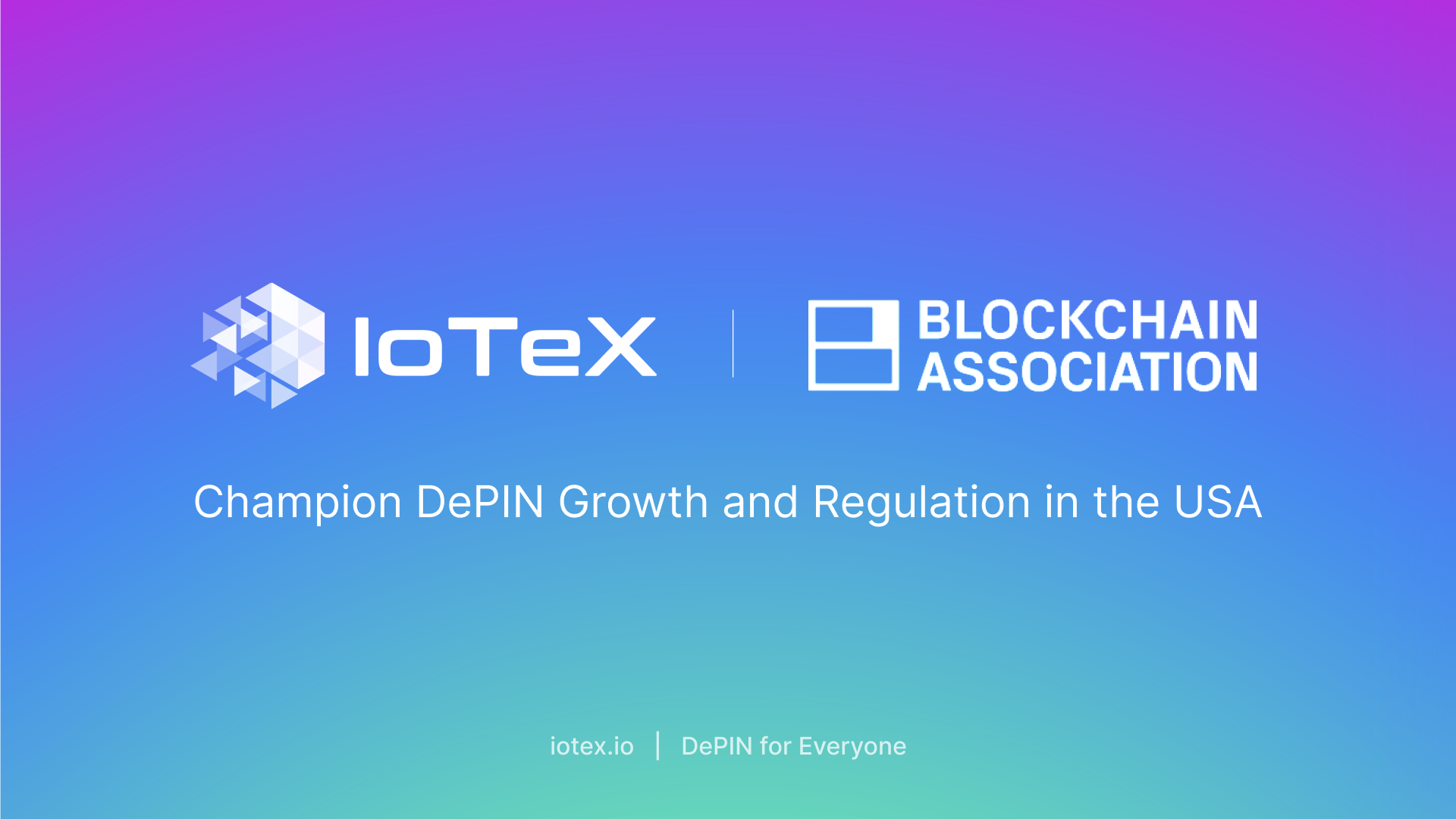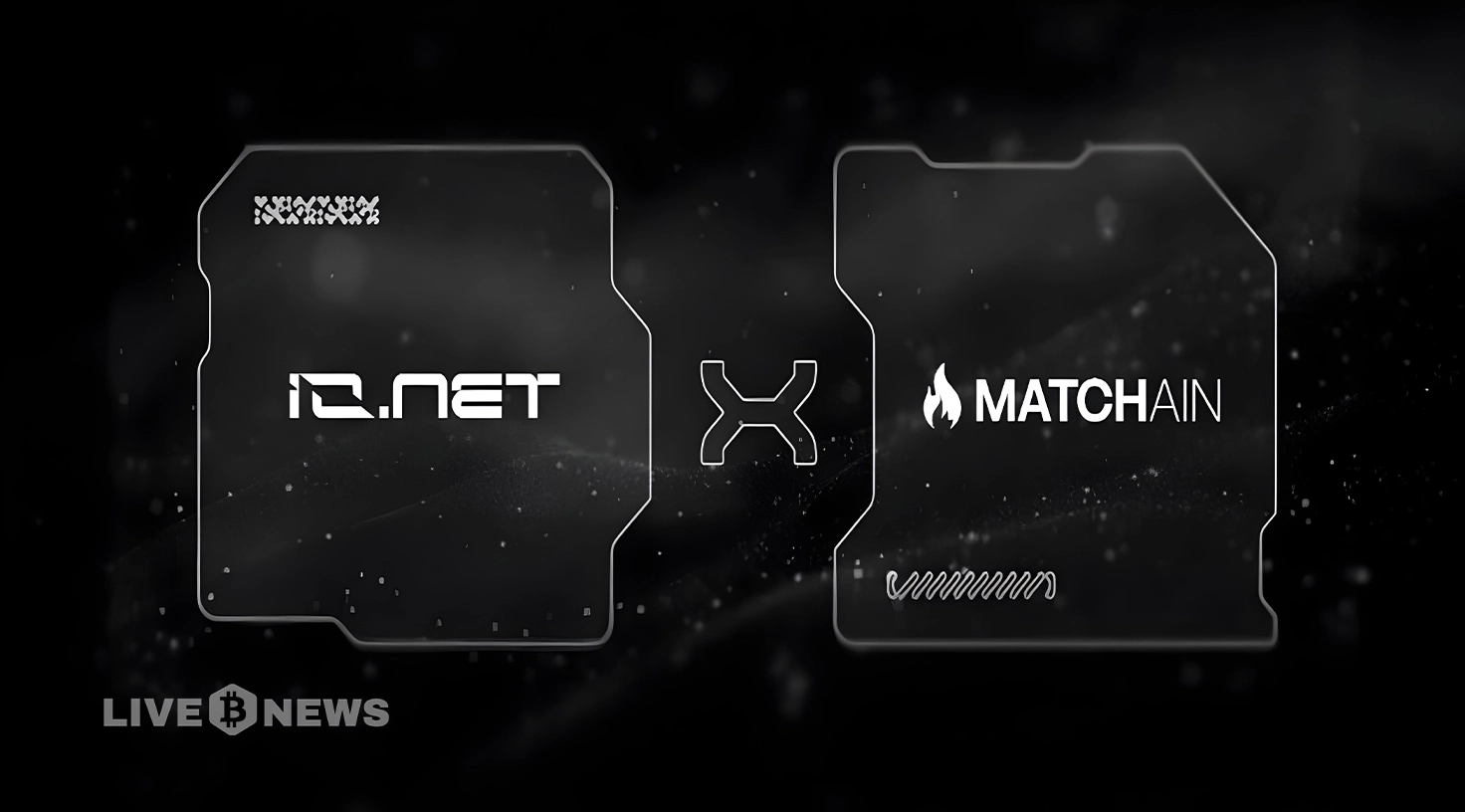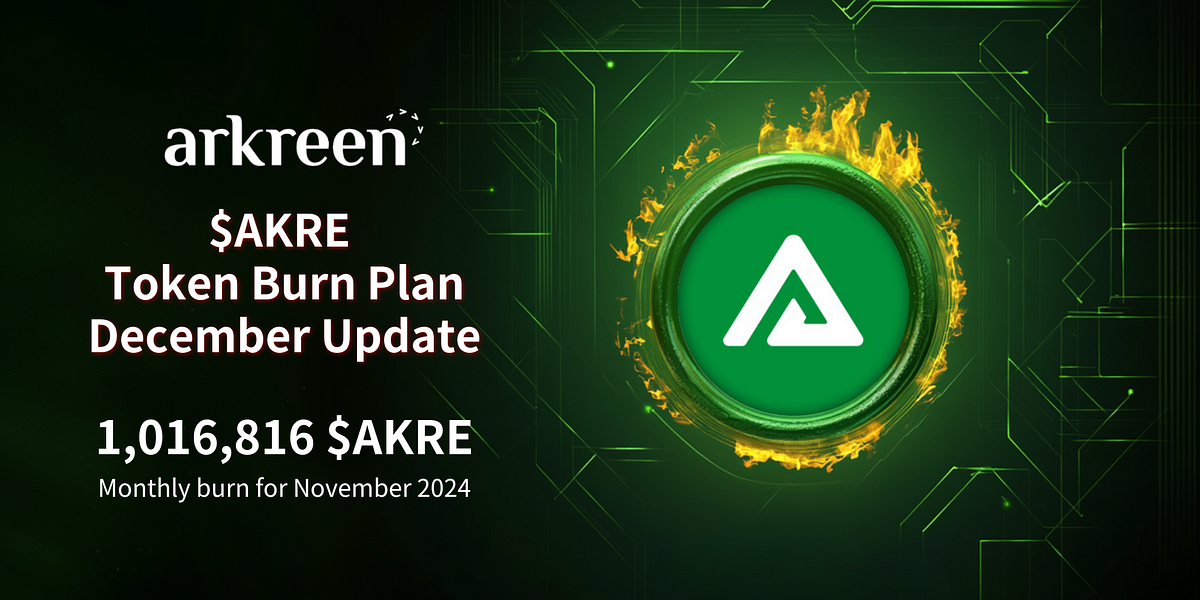Latest DePIN News

a year ago
Akash Network: A Leader in Decentralized Physical Infrastructure
In 2024, the cryptocurrency landscape has been dominated by the trend of Decentralized Physical Infrastructure Network (DePIN), with the Akash Network emerging as a significant player in this space. Co-founded by Greg Osuri, a notable software developer and founder of AngelHack, Akash operates as an open-source "super cloud" that facilitates the buying and selling of computing resources. This model is particularly relevant in the current age of artificial intelligence, where computing power is in high demand. DePIN leverages blockchain technology to streamline access to resources that are typically fragmented, positioning Akash as a viable alternative to centralized computing solutions like Nvidia's chips.
The Akash Network aims to democratize access to computing power, making it more affordable for individual users. Osuri emphasizes the platform's core values, stating that Akash provides users with the "right to compute," promoting freedom from censorship and encouraging free thought. The native token of the Akash Network, $AKT, serves as the currency for transactions within this ecosystem, further integrating the blockchain technology into everyday computing needs. This innovative approach has garnered significant attention and usage among users.
In a remarkable demonstration of its growing popularity, Akash reported a staggering 1,729% increase in year-over-year user fees in the third quarter of 2024. This surge indicates a strong demand for decentralized computing solutions and highlights the potential of Akash to reshape the future of cloud computing. As DePIN continues to evolve, Akash Network stands out as a pioneering force in making computing resources accessible and affordable for all users, aligning with the broader trends in the cryptocurrency space.

a year ago
IoTeX Advancing Regulatory Clarity for DePIN Projects in the U.S.
Advancing Regulatory Clarity for DePIN Projects in the U.S.
IoTeX, a leader in Decentralized Physical Infrastructure Networks (DePIN), has recently joined the Blockchain Association in Washington, D.C. This strategic move aims to enhance regulatory clarity and promote the adoption of DePIN technology and broader blockchain applications in the U.S. DePINs bridge real-world devices and infrastructure with the digital realm, offering transformative potential. However, regulatory uncertainty has been a barrier to their widespread adoption. By collaborating with policymakers through the Blockchain Association, IoTeX seeks to create clear pathways for DePIN projects to thrive and expand, ensuring accessibility and compliance for all users. This partnership is crucial for unlocking the full potential of decentralized infrastructure under clear regulations.

a year ago
Emerging Altcoins: Innovations and Opportunities in Cryptocurrency
In the rapidly evolving cryptocurrency landscape, altcoins are making significant strides by addressing the limitations of Bitcoin, such as high transaction fees and slow processing times. Among the most promising altcoin projects are Aave (AAVE), BlockDAG (BDAG), Bittensor (TAO), and Arbitrum (ARB). These projects are not only innovating in terms of technology but also creating unique opportunities for early investors. As the market remains volatile, these altcoins are carving out their niches, potentially reshaping the future of cryptocurrency with their advanced features and scalability solutions.
BlockDAG (BDAG) stands out as a leading layer-1 blockchain project, utilizing a Directed Acyclic Graph (DAG) structure combined with Proof-of-Work (PoW) consensus. This innovative architecture allows for simultaneous transaction validation, resulting in faster speeds and improved decentralization. The success of BlockDAG's presale, which raised over $159 million, reflects strong investor confidence, with the coin's price soaring by 2240%. Additionally, the introduction of a 5-tier bonus system rewards early adopters, making BlockDAG a compelling choice for those looking to invest in the next crypto bull run.
Aave (AAVE) is revolutionizing decentralized finance (DeFi) lending by enabling users to lend and borrow cryptocurrencies without intermediaries. Its unique flash loan feature allows for instant, uncollateralized loans, positioning Aave as a key player in liquidity management within DeFi. Meanwhile, Bittensor (TAO) merges blockchain with artificial intelligence, creating a decentralized protocol for AI training and deployment. Lastly, Arbitrum (ARB) addresses Ethereum's scalability issues by providing a layer-2 solution that enhances transaction efficiency. Each of these projects contributes to the broader evolution of decentralized systems, with BlockDAG emerging as a standout contender due to its innovative technology and robust community engagement.

a year ago
Lit Datil Mainnet Beta: Two Months of Progress and Future Prospects
The Lit Datil Mainnet Beta has made significant strides since its launch, showcasing the potential of decentralized key management in enhancing Internet security and functionality. Over the past two months, ecosystem partners have actively utilized the platform to develop innovative applications. The integration of Multi-Party Computation Threshold Signature Schemes (MPC + TSS) and Trusted Execution Environments (TEEs) has enabled developers to manage keys effectively while performing secure computations. The recent upgrade to the Datil network has introduced Programmable Signing, allowing for seamless transaction signing across various blockchain networks, including Ethereum and Bitcoin.
The growth metrics of the Lit network reflect its increasing adoption and utility. With over 90,000 signature requests generated using Lit PKPs and more than 50,000 using Wrapped Keys, the platform has secured over $200,000 in total value. The total number of keys created has surpassed one million, indicating a robust user engagement. Additionally, the network has processed nearly 25 million requests since its inception, demonstrating its capability to support a diverse range of applications, from decentralized finance (DeFi) to autonomous AI agents and private data marketplaces.
Looking ahead, the Lit team is focused on enhancing the platform's capabilities with new features such as longer-running Lit Action jobs, additional signature schemes, and improved performance through horizontal scaling. The anticipated launch of the v1 Mainnet in early 2025 will further solidify Lit's position in the blockchain ecosystem, introducing a live network token and additional functionalities. As the journey continues, users can expect exciting engagement opportunities through upcoming questing campaigns, fostering a vibrant community around Lit's innovative solutions.

a year ago
Matchain Partners with io.net to Enhance Decentralized AI Infrastructure
Matchain, a decentralized AI identity blockchain, has announced a strategic partnership with io.net, a leader in decentralized computing networks. This collaboration aims to enhance the infrastructure available to developers within the Matchain ecosystem by providing low-cost, scalable GPU-powered AI tools. As Matchain's official compute partner, io.net will deliver decentralized GPU infrastructure that enables a wide range of AI applications. This partnership is expected to simplify infrastructure management for developers and address the increasing computational demands of Web3 technologies, particularly in the realm of artificial intelligence.
The partnership promises to provide Matchain developers with cost-effective and scalable GPU resources, essential for the intensive workloads involved in training, deploying, and scaling AI models. Compared to traditional cloud computing services, the resources offered through this collaboration will significantly reduce costs for developers, making high-performance computing more accessible for decentralized projects. This enhancement will broaden the scope of Matchain's ecosystem, allowing developers to create decentralized applications (dApps) with innovative approaches to identity and data management, leveraging the AI-optimized capabilities of Matchain and io.net's GPU-oriented infrastructure.
Jessie Xiao, the chief commercial officer at Matchain, emphasized the importance of this partnership in facilitating the development of decentralized AI applications. He stated that teaming up with io.net has amplified their ability to provide developers with affordable, high-performance infrastructure for next-generation applications. Additionally, this collaboration aligns with Matchain's broader goal of utilizing blockchain technology for AI research. By integrating io.net's decentralized compute services, Matchain users will benefit from on-demand resources, faster payments via the Solana blockchain, and tailored support for AI model training and deployment. This partnership marks a significant advancement in decentralized AI innovation, empowering developers to build secure, scalable, and cost-efficient applications on the Matchain platform.

a year ago
Shiba Inu vs. Floki: The Memecoin Showdown
In the latest showdown of the memecoin arena, Shiba Inu ($SHIB) and Floki ($FLOKI) are set to battle for supremacy. Both tokens, riding the coattails of Dogecoin ($DOGE), have carved unique paths in a volatile crypto landscape. As macroeconomic factors, such as the upcoming U.S. CPI data and the indecisive Ethereum/BTC pair, loom large, the altcoin market cap is flirting with levels reminiscent of the 2021 bull run. This environment raises questions about the sustainability of these tokens, especially given the potential for a 25% correction in the altcoin sector. The community strength and speculative nature surrounding these tokens will play a crucial role in their survival amidst the storm.
Shiba Inu, initially launched as a decentralized community experiment, has evolved into a multifaceted ecosystem with ambitions beyond mere speculation. Its offerings include ShibaSwap DEX, plans for an algorithmic stablecoin, and a metaverse project. However, with a staggering total supply of 589 trillion tokens, SHIB faces inflationary challenges, necessitating robust utility adoption to support its valuation. Conversely, Floki, inspired by Elon Musk's dog, combines memecoin allure with tangible utility ambitions, including an NFT gaming metaverse and a DeFi suite. Despite its tighter circulating supply of 9.6 trillion tokens, Floki's heavy whale dominance poses risks of sudden sell-offs, making it vulnerable in bearish market conditions.
From a technical analysis perspective, both tokens exhibit bullish momentum, but caution is warranted due to low trading volumes. SHIB has confirmed a Cup & Handle breakout but may face resistance at $0.0000350, while FLOKI's breakout is similarly dependent on volume spikes above $0.0003. Investors are advised to accumulate during dips and monitor volume closely to avoid potential bull traps. Ultimately, while SHIB offers a broader ecosystem for long-term growth, FLOKI may appeal to those seeking immediate gains. As always, the speculative nature of memecoins necessitates careful planning and risk management for investors navigating this crowded and volatile market.

a year ago
4EVERLAND: Pioneering Web3 Cloud Computing with a Dual-Token Model
4EVERLAND is revolutionizing the Web3 landscape with its integrated cloud computing platform that merges storage, networking, and computational capabilities. Positioned within the Decentralized Physical Infrastructure Networks (DePIN) and AI sectors, 4EVERLAND aims to facilitate a smooth transition for developers from Web2 to Web3. The platform's economic model is meticulously crafted to ensure network stability and security while promoting a sustainable incentive mechanism. This approach not only accelerates the deployment of resilient infrastructure but also guarantees a fair distribution of benefits among all stakeholders, fostering collaboration towards shared objectives that enhance the ecosystem's overall value.
The dual-token economic model of 4EVERLAND comprises $4EVER, the governance token, and $LAND, the resource-accounting token. $LAND serves as a stable payment system pegged at a fixed exchange rate, ensuring predictable billing for resource consumption. It is strictly used for resource payments within the ecosystem and cannot be traded on secondary markets. Conversely, $4EVER functions as the governance and utility token, enabling holders to participate in decision-making processes and capture value through a buyback mechanism. This dual structure effectively separates resource consumption from governance, providing a streamlined operational model that enhances user engagement and liquidity.
Looking ahead, 4EVERLAND's tokenomics are designed to balance long-term stability with growth opportunities. With a total supply of 10 billion $4EVER tokens, allocations are strategically distributed to incentivize resource providers, support community development, and ensure operational funds. The platform's vision is to establish $4EVER as a pivotal component in the decentralized internet, empowering developers and users to collaboratively build a thriving Web3 ecosystem. As 4EVERLAND continues to evolve, it is poised to become a significant player in the future of decentralized infrastructure and community-driven innovation.

a year ago
Naoris Protocol Launches Revolutionary Post-Quantum Cybersecurity Solution
As cyberattacks become increasingly sophisticated and the challenges posed by quantum computing loom on the horizon, Naoris Protocol has introduced a groundbreaking solution that aims to redefine digital security. This initiative heralds the world's first Post-Quantum powered Decentralized Physical Infrastructure Network (DePIN) specifically designed for cybersecurity and digital trust. With the support of notable figures such as DNS designer David Holtzman and former White House Chief of Staff Mick Mulvaney, this innovative protocol transforms traditionally untrusted devices into a decentralized layer of cyber-trusted validator nodes, effectively eliminating the single points of failure that plague centralized security systems.
The launch of Naoris Protocol comes at a crucial juncture, particularly in light of the CrowdStrike outages in July 2024, which exposed the vulnerabilities inherent in centralized security frameworks. These outages disrupted services across multiple sectors, including aviation, banking, and media, underscoring the urgent need for decentralized security solutions. David Carvalho, CEO & Founder of Naoris Protocol, emphasizes that current centralized models are fundamentally vulnerable, stating, "Our protocol decentralizes digital security, where every device becomes a secure validator node as part of a trusted, incentivized layer that uses post-quantum cryptography to create a real-time, decentralized validation brain."
The protocol introduces four key innovations: Post-Quantum Security to withstand quantum threats, a Decentralized Security Layer for real-time validation, an Incentivized Security Model rewarding devices for maintaining security, and continuous verification to mitigate risks of compromise. As the DePIN market is projected to reach $3.5 trillion by 2028, Naoris Protocol is poised to serve as a vital security backbone for both Web2 and Web3 infrastructures. With an upcoming incentivized Testnet launch, users will have the opportunity to participate in stress-testing this revolutionary system, laying the groundwork for a global post-quantum cybersecurity DePIN that promises to enhance cyber resilience across various industrial applications.

a year ago
Dimo to Migrate to Coinbase's Base for Enhanced Partnerships and Innovation
Dimo, a pioneering platform designed for developers to create applications that allow car drivers to monetize their data, is set to migrate from the Polygon network to Coinbase’s Base layer-2 chain. Co-founder Rob Solomon emphasized that this transition opens up numerous opportunities for valuable partnerships. Dimo aims to establish a global API layer for cars, envisioning a future where vehicles are smart and programmable, potentially leading to innovations such as AI-driven car mechanics and smart parking solutions. This strategic move is expected to enhance collaboration possibilities, particularly with projects like Cario, which offers on-chain car ownership titles, and Blackbird, a restaurant loyalty company.
The migration to Base is projected to occur in late 2025, as Dimo's team is currently assessing the technical requirements for the transition. Solomon reassured users that minimal action would be required on their part, likely just a simple button press. He expressed admiration for Polygon but believes that Base's robust infrastructure and credibility with large enterprises make it a more suitable environment for Dimo's growth. Base, developed by Coinbase, has already attracted numerous projects, including Chainlink and Aave, which Solomon views as a solid foundation for Dimo to realize its long-term vision of integrating blockchain technology into the automotive industry.
Solomon envisions a future where Dimo's blockchain-based Vehicle ID system will replace traditional vehicle identification numbers (VINs), streamlining processes such as warranty claims and insurance management. He believes that the blockchain will serve as the new standard for vehicle registrations and ownership, with all transactions occurring on-chain. This transformative vision positions Dimo as a key player in the future of the automotive sector, aligning with the broader trend of digital integration that has become essential for modern businesses.

a year ago
Arkreen's November 2024 Token Burn: A Commitment to Sustainability
Arkreen is making significant strides in promoting transparency and community trust through its monthly token burn initiative. For November 2024, the total burn of $AKRE tokens reached 1,016,816.02, reflecting the company's commitment to sustainability and accountability. The process involves a service fee for issuing tokenized Renewable Energy Certificates (ART), with each ART equating to 1000 $AKRE. In November, Arkreen issued 370.91467 ART, collecting fees amounting to 370,914.67 $AKRE. Of this, 296,731.74 $AKRE was allocated for burning, while 74,182.93 $AKRE was directed to the treasury, enhancing the ecosystem's financial health.
In addition to the issuance fees, November 2024 marked a pivotal moment for Arkreen with the introduction of service fees for on-chain ART offsets. This new initiative allocates 80% of the collected fees for token burns, reinforcing the deflationary model of the ecosystem. Each ART offset incurs a fee of 1 ART = 1000 $AKRE, with the Arkreen Foundation currently sponsoring these fees during the smart contract upgrade. In November, 900.10535 ART offsets were processed, resulting in 720,084.28 $AKRE planned for burning and 180,021.07 $AKRE allocated to the treasury.
Looking ahead, Arkreen remains dedicated to its mission of fostering a sustainable and decentralized future. The token burns are a crucial aspect of maintaining a deflationary model, which not only enhances value for stakeholders but also supports the growth of decentralized renewable energy solutions. With a remaining supply of 9,988,588,639.63 $AKRE, Arkreen is poised for future success, with additional burns planned based on utility revenue. The community is encouraged to stay engaged as Arkreen continues its journey toward a greener tomorrow, with the next update expected in January 2025.
Signup for latest DePIN news and updates